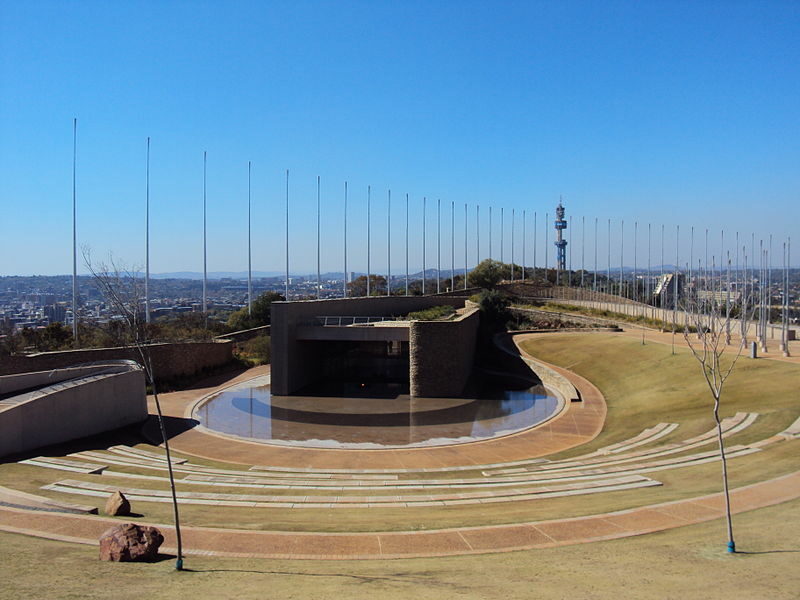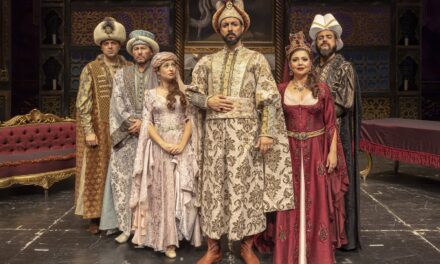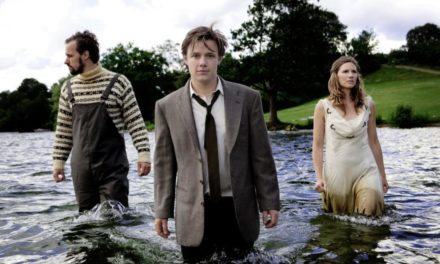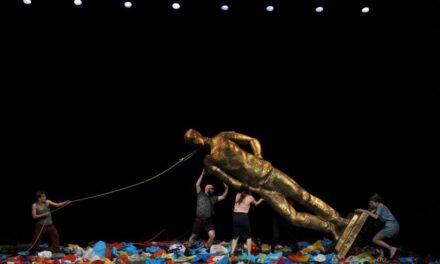In 1999, working with colleagues from the Theatrical Event Working Group of the International Federation for Theatre Research (IFTR), I began to explore the notion that the arts festival circuit in South Africa may actually have come to represent the theatrical “season” in the country, replacing the by-then lapsed state-funded system of more conventional venue- and company-based repertory companies inherited from Europe.
I have repeated this statement with increasing certitude since then, as the number of active festivals in the country has continued to multiply, almost exponentially, and festivals have increasingly become both venues for performances and themselves theatrical events of significance. The concept of the festivalisation of theatre and culture, a notion borrowed from Kaptein (1996), seemed to describe the general process involved very well, and so Festivalising! became the title of a book on worldwide festivals I co-edited with Shulamith Lev-Aladgem, Jacqueline Martin, Willmar Sauter, and Henri Schoenmakers in 2007. Much of what follows derives from that project.
In South Africa today the origins of most of the numerous arts and culture festivals seem to lie in three general imperatives: to promote cultural practices and hegemony, to use art to serve a local purpose (fundraising, education, marketing of the town/venue, etc.), and most pragmatically to create work for artists in the face of receding resources and facilities. Festivals thus, besides providing opportunities for productions to be seen and artists to be employed and to market and enhance the host venue or region, have also become a means of serving some sociocultural or sociopolitical purpose (e.g., the preservation and/or advancement of a particular language and cultural identity) as well as retaining the event in the cultural memory of the particular society.
In the book I maintained that this “festival season,” though appearing to be a splintered and diverse season made up of a series of cultural “mini-bytes,” is actually something much more, often a more-or-less cohesive poly-system of simultaneous events. I would argue that a festival is in fact akin to a huge communal “venue” or cultural market, to which audiences are drawn for the occasion to watch, interact with, and respond to a range of plays, performances, and other arts events, which are thus effectively launched and displayed for the public at large through the many marketing and publicity processes set in motion by and surrounding the festival. Slogans like “As seen at the Montreal Festival,” “Newly from the Edinburgh Festival,” and “Performed at the Grahamstown Festival” have become a standard and effective part of marketing.
In other words, festivals are not only where the work is to be found; they are where the artistic output of the actor, director, choreographer, etc. is eventified—that is, where the everyday life event (of performing a play, a concerto, a dance; exhibiting a painting, a sculpture, an installation) is turned into a significant Cultural Event, framed and made meaningful by the presence of an audience and reviewers who will respond to the celebrated event. Which implies that, in order to really understand the nature, range, and power of South African theatre and performance, you actually have to attend at least some of the 10 or so major annual festivals in the country. (According to one survey, undertaken by a student a few years ago, the country must now have close to 800 large, medium, and small festivals a year—though not everything called a “festival” would qualify as an arts or theatre festival of course!)
As the book as a whole argues, this complexity of functions is all the more important in a world in which so many formal structures of the past are no more, or are changing and come under threat. In South Africa all artistic endeavour is freelance and commercial today, with subsidies coming from the commercial sector primarily. This is true internationally as well, as theatre worldwide has had to adapt to austerity measures, the threat of the visual and digital revolution, and changing tastes. Thus we have seen an international revival of festival culture and a resurgence of the festival as something far more than a celebratory or religious event, a fundraising effort, or mere entertainment; and it is increasingly becoming a central element in the very process of making and distributing theatre and performance events as art works and as entertainment.
Linked to the above are a few other important perspectives, which see festivals as also fulfilling a range of functions in the broader society. For instance, deriving from what Willmar Sauter and colleagues have referred to as the latent “eventness” of festival as an entity, is the argument that the festival is itself a cultural event which in its own way eventifies elements and issues of the particular society in which it is taking place. Considerable attention has thus lately been paid to festivals and pageants, particularly from this performance-theory perspective, by researchers who look at the festivals as performances or as theatrical events in their own right. Such researchers tend to focus on the important—and perhaps less conscious—ideological imperatives lying behind particular festivals, and on the impact of such festivals in the various communities and arts structures in the shorter and the longer term.
Within this latter field there has of late been a flourishing of applied research on the economic, strategic, and administrative role played by festivals. Very often such studies are done as impact assessment and feasibility studies for particular festivals by units attached to the festivals . The development of this field, and the evolution of an Africa-wide awareness of the power of cultural practice, has expanded enormously in the past 15 years or so, inter alia led by researchers units and institutes at Rhodes University, the North Western University , the University of Pretoria, the University of Johannesburg, and the University of South Africa.
Unfortunately to date I know of no larger-scale study that has actually tried to combine all the various approaches in a more encompassing and substantial inter- or cross-disciplinary study of the field of festivals and festivalisation. Such a study would ideally draw on a range of disciplinary approaches to the festival phenomenon, ranging from literary, cultural, aesthetic, political, philosophical, and sociological considerations to systemic, commercial, marketing, and other applied perspectives. All these approaches exist and are actively pursued in universities, articles, and books today, but as exclusionary approaches, rather than as a meta-field of enquiry.
This need is certainly felt in South Africa today, where it actually could be—and should be—done easily enough, considering the number of festival examples and the range of studies already undertaken. A long overdue project, just awaiting a project team to put it together.
Bibliography
Cremona, Vicky Ann, Peter Eversmann, Hans van Maanen, Willmar Sauter, and John Tulloch, eds. 2004. Theatrical Events—Borders, Dynamics, Frames. Amsterdam and New York: Rodopi Publishers.
The Encyclopaedia of South African Theatre, Film, Media and Performance. http://esat.sun.ac.za/index.php/Main_Page.
Hauptfleisch, Temple, Shulamith Lev-Aladgem, Jacqueline Martin, Willmar Sauter, and Henri Schoenmakers, eds. 2007. Festivalising! Theatrical Events, Politics and Culture. Amsterdam and New York: Rodopi Publishers.
Kaptein, Paul. 1996. “De beginperiode van het Holland Festival. Festivals en festivalisering.” In Een theater geschiedenis de Nederlanden, edited by R. L. Erenstein. Amsterdam: Amsterdam University Press, pp. 672–680.
This post was written by the author in their personal capacity.The opinions expressed in this article are the author’s own and do not reflect the view of The Theatre Times, their staff or collaborators.
This post was written by Temple Hauptfleisch.
The views expressed here belong to the author and do not necessarily reflect our views and opinions.

















